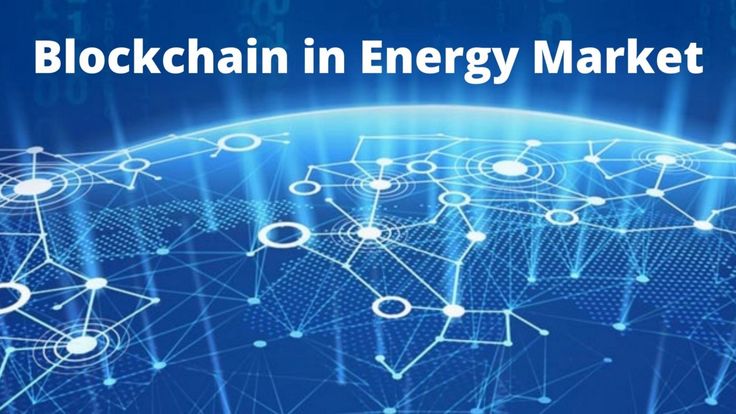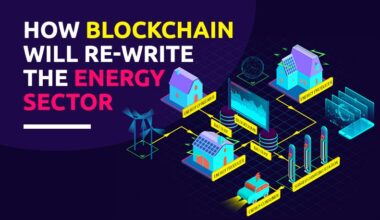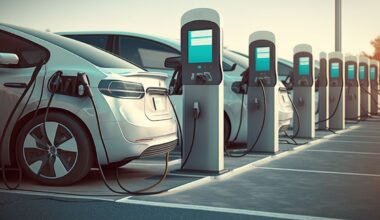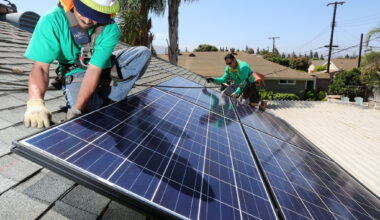Blockchain + AI: The Future of Transparent Renewable Energy Markets
Introduction
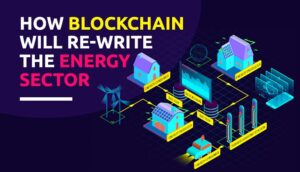
Imagine a world in which energy is not just clean and renewable, but also fully transparent—where you can trace every kilowatt-hour of electricity back to its source, and where data-driven algorithms automatically optimize your consumption for cost and sustainability. Picture a scenario where millions of households, businesses, and entire communities seamlessly trade excess solar or wind power in real time, knowing that every transaction is tamper-proof and secured by blockchain. Now, envision artificial intelligence (AI) continuously analyzing market signals, weather forecasts, and consumer habits to balance supply and demand in a matter of milliseconds.
Sound too futuristic? It’s closer than you might think. The convergence of blockchain and AI in the renewable energy sector is steadily advancing, rewriting the rules of how we produce, distribute, and pay for power. In fact, renewable energy markets are at a critical juncture today, facing challenges that range from verifying green energy claims to managing the complex data flows needed to optimize power grids. Blockchain offers the promise of immutability and transparency, while AI brings predictive analytics, automation, and machine learning capabilities. Together, these two technologies are poised to create the transparent renewable energy markets of the future.
In this comprehensive blog post, you will:
- Discover the core principles of blockchain and AI as they apply to renewable energy.
- Learn from real-world examples and step-by-step blueprints to harness these technologies for more transparent and efficient markets.
- Gain insights into common pitfalls to avoid, backed by case studies that highlight best practices.
- Explore emerging trends shaping the next decade, including decentralized energy trading platforms, AI-driven microgrids, and carbon credit marketplaces.
- Walk away with actionable knowledge you can apply to your own ventures, whether you’re a startup, an established energy provider, a government agency, or simply an enthusiast.
By the end of this post, you’ll not only grasp the potential of blockchain and AI in revolutionizing renewable energy but also have a blueprint for implementing these concepts in real-world scenarios. Get ready to position yourself at the forefront of this dynamic industry, where technological innovation meets global sustainability goals.
Table of Contents
- Why Blockchain and AI Matter in Renewable Energy
- Breaking Down the Core Concepts
- 2.1 Understanding Blockchain
- 2.2 Introduction to AI
- 2.3 Why They Complement Each Other
- Transparent Renewable Energy Markets: The Current Challenges
- Blockchain Use Cases in Renewable Energy
- AI Applications in Renewable Energy Markets
- Step-by-Step Blueprint for Implementing Blockchain and AI
- Case Studies and Real-Life Examples
- Common Pitfalls and How to Avoid Them
- Future Insights and Trends
- Conclusion
- FAQs
1. Why Blockchain and AI Matter in Renewable Energy
The renewable energy sector has been growing exponentially over the last decade, propelled by declining costs for solar and wind technologies, government incentives, and increasing environmental awareness. Yet, as the share of renewable energy in the global energy mix rises, new operational complexities have emerged:
- Intermittency: Wind and solar outputs fluctuate based on weather conditions.
- Grid Management: Traditional grids aren’t designed for decentralized power generation.
- Regulatory & Compliance Issues: Ensuring that renewable energy certificates (RECs) and carbon credits are trustworthy is an ongoing challenge.
- Market Fragmentation: Renewable energy trading can be complex, often limited to large-scale players or regulated by outdated systems.
Blockchain technology offers a secure, transparent ledger that eliminates the need for intermediaries to verify transactions. This is particularly useful in energy markets where trust and traceability are essential. On the other side, AI excels in managing massive data sets, optimizing energy production and consumption, and making predictive decisions in real-time. When combined:
- Blockchain ensures trust in data records and transactions.
- AI leverages that trusted data to make informed, automated decisions.
The result is a self-correcting, data-driven ecosystem that can handle the complexities of renewable energy, from generation to consumption. Simply put, blockchain + AI is not just a passing trend; it’s a powerful framework capable of solving some of the biggest challenges facing renewable energy markets today.
2. Breaking Down the Core Concepts
2.1 Understanding Blockchain
Blockchain is often described as a digital ledger that’s distributed across a network of computers, or “nodes.” Every time a transaction occurs—whether it’s trading a cryptocurrency, recording a contract, or documenting the production of renewable energy—it’s bundled with other transactions into a “block” and then securely linked (or “chained”) to the preceding block.
Key attributes of blockchain include:
- Decentralization: No single entity controls the entire network.
- Immutability: Once a transaction is recorded, it cannot be altered without changing every subsequent block.
- Transparency: All participants see the same version of the ledger, fostering trust.
- Security: Cryptographic techniques secure the data, making unauthorized alterations extremely difficult.
In renewable energy markets, this means every kilowatt-hour of green energy can be traced from its source (like a solar farm) to the end-user, ensuring authenticity and accountability.
Smart Contracts: The Game Changer
A smart contract is a piece of code that automatically executes predefined actions when certain conditions are met. For instance, if you generate 100 kWh of solar energy, a smart contract could instantly verify this via IoT sensors and credit your account with tokenized energy assets or currency. This eliminates paperwork and intermediaries, speeding up transactions and reducing costs.
2.2 Introduction to AI
Artificial Intelligence (AI) encompasses a wide array of technologies—like machine learning, deep learning, natural language processing (NLP), and computer vision—that enable machines to mimic human intelligence. AI systems excel at analyzing vast quantities of data to identify patterns, make predictions, and even perform tasks autonomously.
In the context of renewable energy, AI can:
- Predict Supply and Demand: Use weather data to forecast solar and wind power production.
- Optimize Energy Use: Automatically adjust consumption in response to real-time prices or grid constraints.
- Prevent Downtime: Identify equipment faults before they become catastrophic, reducing maintenance costs.
- Adapt to User Behavior: Use historical data to tailor energy distribution or suggest behavior changes for efficiency.
2.3 Why They Complement Each Other
While blockchain ensures the integrity and traceability of transactions, AI leverages the credible data in the blockchain to make intelligent, automated decisions. Consider a scenario where smart devices in a microgrid measure the output of solar panels:
- Blockchain securely records each measurement, guaranteeing data integrity.
- AI analyzes this trusted data to forecast short-term energy production and sets optimal selling or storage strategies.
- Smart Contracts automatically facilitate trades between buyers and sellers on a peer-to-peer basis.
This synergy elevates the transparency and efficiency of renewable energy markets, removing traditional friction points like intermediary fees, regulatory bottlenecks, and manual oversight.
3. Transparent Renewable Energy Markets: The Current Challenges
Despite the growing popularity of green energy solutions, transparency remains a significant hurdle. Here are some of the major pain points:
- Greenwashing: Some companies claim they use renewable energy or offset their carbon footprints, but without solid verification, these claims can be overstated or outright false.
- Limited Traceability: Traditional energy certificates or carbon credit systems rely on centralized bodies to confirm compliance. This often entails administrative overhead and the risk of fraudulent reporting.
- Complex Regulatory Frameworks: Different countries and regions have their own standards for RECs (Renewable Energy Certificates), making cross-border trade cumbersome.
- Inefficient Market Operations: Manual processes for verifying energy production and distribution can be slow and prone to errors.
- Lack of Real-Time Pricing and Data: Most small-scale producers (like households with rooftop solar) don’t have easy access to dynamic pricing, limiting their revenue potential.
Blockchain helps address these issues by creating a tamper-proof ledger of energy transactions, while AI can automate tasks like real-time pricing, demand-response strategies, and compliance checks—dramatically simplifying the process of proving energy sources and exchanging them across different markets.
4. Blockchain Use Cases in Renewable Energy
- Peer-to-Peer Energy Trading
- Concept: Consumers with solar panels or wind turbines can sell surplus energy directly to neighbors.
- How It Works: IoT devices measure energy output, and a blockchain-based marketplace matches buyers with sellers automatically.
- Impact: Eliminates intermediaries, lowers transaction costs, and fosters community-driven energy models.
- Renewable Energy Certificates (RECs) and Carbon Credits
- Concept: Tokenize certificates representing proof of green energy generation or carbon offset.
- How It Works: Each REC or carbon credit is recorded on the blockchain, ensuring authenticity. Smart contracts can prevent double-counting by burning tokens once they’re retired or used.
- Impact: Simplifies compliance, reduces fraud, and opens up broader participation in carbon markets.
- Supply Chain Tracking for Green Equipment
- Concept: Track solar panel components or wind turbine parts from manufacturing to installation.
- How It Works: Each stage of production and transport is documented on a blockchain, ensuring no counterfeit parts enter the ecosystem.
- Impact: Enhances quality control, reduces warranty issues, and offers a transparent view of equipment lifecycle.
- Crowdfunding Renewable Projects
- Concept: Blockchain-based tokens represent fractional ownership of solar farms or wind turbines, making it easier for individuals to invest.
- How It Works: Investors buy tokens during a crowdfunding phase. Revenue generated by selling energy is automatically distributed as dividends via smart contracts.
- Impact: Democratizes renewable energy investment, fostering broader participation and public support.
- Microgrids and Community-Based Energy Systems
- Concept: Decentralized, often off-grid systems powered by local renewables.
- How It Works: A local blockchain network manages the distribution of energy, verifying each transaction’s authenticity.
- Impact: Ideal for rural areas without reliable central grids, enhancing resilience and local autonomy.
5. AI Applications in Renewable Energy Markets
- Predictive Maintenance
- Concept: AI systems analyze data from turbines, solar panels, and other equipment to predict faults before they happen.
- Tools & Techniques: Machine learning algorithms on sensor data, anomaly detection methods.
- Benefit: Reduced downtime, lower operational costs, and prolonged equipment lifespan.
- Smart Grid Management
- Concept: AI regulates how electricity flows in a grid, balancing supply and demand in real time.
- Tools & Techniques: Reinforcement learning, real-time analytics on streaming data.
- Benefit: Enhanced grid stability, reduced blackouts, and more efficient power distribution.
- Dynamic Pricing and Demand Response
- Concept: AI models forecast energy demand, adjusting prices to encourage consumption when energy is abundant and discourage it when scarce.
- Tools & Techniques: Time series analysis, pricing algorithms, consumer behavior modeling.
- Benefit: Maximizes renewable energy usage, reducing waste and lowering electricity costs.
- Energy Load Optimization
- Concept: Smart meters and AI-driven controls regulate appliances, EV chargers, and HVAC systems to optimize energy consumption.
- Tools & Techniques: IoT devices, real-time feedback loops, neural networks for pattern recognition.
- Benefit: Decreases peak load, saving costs for both utilities and consumers.
- Carbon Footprint Tracking
- Concept: AI integrates data from transportation, manufacturing, and energy consumption to provide a real-time carbon footprint score.
- Tools & Techniques: Big data analytics, environmental metrics, geospatial data integration.
- Benefit: Enables corporations and individuals to take immediate actions to reduce emissions, meeting or exceeding compliance goals.
6. Step-by-Step Blueprint for Implementing Blockchain and AI
Below is a detailed roadmap designed to help you integrate blockchain and AI into your renewable energy projects. Whether you’re an entrepreneur, a policymaker, or an established utility provider, these steps provide a clear pathway forward.
Step 1: Define Your Objectives
- Identify Your Main Goal: Are you aiming to facilitate peer-to-peer energy trading, track carbon credits, or optimize grid performance through AI?
- KPIs and Metrics: Outline key performance indicators like cost savings, increased revenue from energy sales, or carbon reductions.
- Feasibility Study: Evaluate whether blockchain and AI are truly necessary. Sometimes a simpler solution might suffice, especially for smaller-scale projects.
Step 2: Assemble the Right Team
- Technical Expertise: You’ll need blockchain developers, AI/ML engineers, and possibly IoT specialists.
- Domain Knowledge: Energy market experts, economists, and legal advisors familiar with regulations and compliance.
- Collaboration: Forge partnerships with tech platforms that already offer blockchain or AI solutions for energy. This can drastically speed up deployment.
Step 3: Choose a Blockchain Platform
- Public vs. Private Blockchain: Public blockchains like Ethereum offer broad participation and strong security but might be slower or costlier in transaction fees. Private blockchains like Hyperledger Fabric provide more control and privacy but lack the large-scale trust of public networks.
- Scalability and Consensus Mechanisms: Proof-of-Work (PoW) may be too energy-intensive, whereas Proof-of-Stake (PoS) or Delegated Proof-of-Stake (DPoS) can be more sustainable and efficient.
Step 4: Integrate AI Tools and Data Pipelines
- Data Collection: Implement IoT sensors to gather data on energy production and consumption in real time.
- Data Preprocessing: Clean and format raw data so AI models can interpret it accurately.
- Model Selection: Use machine learning algorithms for predictive tasks (e.g., forecasting solar output) and reinforcement learning for decision-making tasks (e.g., dynamic pricing).
- Deployment: Leverage cloud platforms or edge computing, depending on latency requirements and data sensitivity.
Step 5: Develop Smart Contracts
- Define Rules and Logic: For peer-to-peer trading, define how transactions are initiated, validated, and settled. For RECs, outline minting and burning rules.
- Audit and Test: Smart contracts are immutable once deployed, so thorough testing and third-party audits are essential to avoid catastrophic bugs.
- Governance: Decide how updates or disputes will be handled. Consider on-chain governance models or multi-signature approvals.
Step 6: Pilot and Iterate
- Prototype Phase: Start small, perhaps within a single community or pilot region.
- User Feedback: Collect input from participants—are transactions fast enough, is the interface intuitive, do they trust the system?
- Iterative Improvements: Refine both the blockchain layer (e.g., reduce gas fees, optimize consensus) and the AI layer (e.g., improve model accuracy).
Step 7: Scale and Expand
- Regulatory Compliance: Work with local and international regulatory bodies to ensure your platform meets all requirements for energy trading and certifications.
- Interoperability: Enable cross-chain capabilities and integrations with existing energy management systems.
- Marketing & User Acquisition: Educate potential users—both consumers and businesses—on the benefits of transparency, security, and automation.
Step 8: Monitor and Optimize
- Continuous AI Training: AI models improve as they ingest more data, so keep feeding them fresh, high-quality datasets.
- Blockchain Network Health: Monitor node performance, transaction throughput, and security metrics.
- Long-Term Vision: Plan for upgrades, including potential migration to more efficient blockchain networks or advanced AI algorithms like deep reinforcement learning.
7. Case Studies and Real-Life Examples
Case Study 1: Power Ledger (Australia)
Power Ledger is a blockchain-based platform that enables peer-to-peer trading of solar energy in residential areas. By combining real-time data and smart contracts, householders with surplus solar power can sell it to neighbors. The platform has successfully launched pilot projects in Australia and Thailand, demonstrating a viable business model for decentralized energy markets.
- Key Success Factor: A user-friendly interface that demystifies blockchain technology and straightforward smart contract implementation.
- AI Angle: While not initially AI-centric, the company is exploring machine learning to forecast solar generation and consumer demand.
Case Study 2: EnergiMine (UK)
EnergiMine uses blockchain and AI to reward energy-efficient behavior. Consumers who take steps to conserve energy or switch to electric vehicles earn ETK tokens. These tokens can be traded or used for discounts on green products.
- Key Success Factor: The tangible incentive mechanism that motivates behavior change.
- AI Angle: AI-driven analytics help identify optimal ways to reduce energy consumption and tailor reward structures for maximum impact.
Case Study 3: LO3 Energy and IBM Blockchain (USA)
LO3 Energy partnered with IBM to create a blockchain-based microgrid for local energy trading in Brooklyn, New York. The platform allows residents with solar panels to sell excess energy to neighbors. AI features include predictive analytics for grid load balancing.
- Key Success Factor: Collaborations with established tech players (IBM), giving the project access to enterprise-level security and support.
- AI Angle: Advanced analytics help predict and respond to supply-demand fluctuations in near real-time.
Case Study 4: WePower (Global)
WePower tokenizes renewable energy production, allowing investors to fund solar and wind projects in exchange for energy tokens. Project owners can then manage tokenized energy contracts on blockchain, ensuring transparent funding and consumption records.
- Key Success Factor: A straightforward approach to crowdfunding and compliance, with verified generation data on-chain.
- AI Angle: The platform is exploring AI-based forecasting to optimize investment decisions and project viability.
8. Common Pitfalls and How to Avoid Them
Pitfall 1: Overlooking Regulatory Complexities
Why It Happens: Enthusiasm for blockchain can overshadow the complicated rules around energy markets and data privacy.
How to Avoid: Engage with regulatory bodies early. Conduct thorough legal reviews to ensure your platform meets local and international standards.
Pitfall 2: Poor User Experience (UX)
Why It Happens: Many blockchain and AI solutions focus heavily on the backend, neglecting the frontend user journey.
How to Avoid: Invest in UX/UI designers who simplify complex systems. Offer educational resources that explain the technology in layman’s terms.
Pitfall 3: Inadequate Data Quality for AI
Why It Happens: AI models are only as good as the data they receive. Inconsistent or sparse data leads to flawed predictions.
How to Avoid: Implement robust data collection and cleaning procedures. Continuously update AI models as more reliable data becomes available.
Pitfall 4: Energy-Intensive Consensus Mechanisms
Why It Happens: Some blockchains (like Bitcoin) rely on Proof-of-Work consensus, which can be environmentally unfriendly.
How to Avoid: Opt for Proof-of-Stake or Delegated Proof-of-Stake protocols. Consider sidechains or Layer 2 solutions for scalability.
Pitfall 5: Underestimating Stakeholder Buy-In
Why It Happens: Not everyone is ready or willing to switch to decentralized energy trading, especially larger utilities or incumbent players.
How to Avoid: Demonstrate clear value propositions—lower costs, reduced fraud, operational efficiencies—and involve key stakeholders from the outset.
9. Future Insights and Trends
The convergence of blockchain and AI in renewable energy is still in its early stages, yet the growth potential is enormous. Below are emerging trends you should watch closely to stay ahead of the curve:
- Integration with IoT and Edge Computing
- Trend: More sensors and devices connecting directly to decentralized networks, enabling real-time data sharing.
- Potential Impact: Enhanced microgrid automation, better predictive maintenance, and improved resilience against centralized failures.
- Tokenized Carbon Credits and Green Bonds
- Trend: Institutional and retail investors will increasingly adopt tokenized financial instruments that represent ownership of carbon offsets or green projects.
- Potential Impact: Greater liquidity in carbon markets, more accurate pricing of emissions, and streamlined compliance.
- AI-Driven Smart Contracts
- Trend: Smart contracts that can adapt to changing circumstances based on AI insights—e.g., automatically adjusting energy prices when certain conditions are predicted.
- Potential Impact: Fully autonomous energy trading platforms, reduced need for human oversight, and near-instant settlement of transactions.
- Cross-Border Renewable Energy Platforms
- Trend: Blockchain-enabled marketplaces that allow seamless, international trading of green energy certificates and tokens.
- Potential Impact: Could unify fragmented markets, making it easier for countries to meet global climate targets.
- Quantum Computing Considerations
- Trend: Although still in nascent stages, quantum computing could impact blockchain security (particularly cryptographic methods) and speed up AI training exponentially.
- Potential Impact: Future-proofing blockchain protocols against quantum threats, while leveraging quantum-accelerated AI could lead to unparalleled analytics for energy optimization.
Preparing for these trends involves continuous learning, technological experimentation, and collaborations with cutting-edge research institutions and industry leaders.
10. Conclusion
The combination of blockchain and AI holds the potential to radically transform renewable energy markets by injecting transparency, efficiency, and trust into every transaction. Whether it’s peer-to-peer solar trading, automated carbon credit issuance, or AI-driven load balancing, these technologies are paving the way for a new energy paradigm.
Key Takeaways
- Blockchain provides the transparent infrastructure needed to verify green energy generation and maintain trust.
- AI leverages that trusted data for tasks like predictive maintenance, demand forecasting, and dynamic pricing, thereby optimizing the entire energy lifecycle.
- Real-world examples such as Power Ledger, EnergiMine, LO3 Energy, and WePower underscore the practicality and impact of these solutions.
- Common pitfalls include failing to address regulatory hurdles, neglecting user experience, and not investing in robust AI data pipelines.
- Future trends point toward deeper integration with IoT, tokenized carbon markets, and even quantum computing considerations.
Read Also: Can AI Solve Africa’s Energy Crisis? What You Need to Know
11. FAQs
FAQ 1: Can blockchain technology really handle the volume of transactions in a large energy market?
Answer: Yes, although scalability is a common concern. Modern blockchains using Proof-of-Stake or Layer 2 solutions (e.g., rollups, sidechains) have significantly improved transaction speeds and lowered costs. The key is choosing a blockchain protocol and architecture that aligns with your project’s scale and transaction needs.
FAQ 2: Aren’t blockchains energy-intensive, defeating the purpose of “green” solutions?
Answer: Some older blockchain systems (like Bitcoin’s Proof-of-Work) are indeed energy-hungry. However, many newer platforms (e.g., Ethereum 2.0’s Proof-of-Stake) have reduced energy consumption by up to 99.95%. It’s crucial to select a sustainable consensus mechanism when implementing blockchain in the renewable sector.
FAQ 3: What types of AI algorithms are best for renewable energy optimization?
Answer: Machine learning for predictive analytics, reinforcement learning for adaptive control systems, and deep neural networks for complex pattern recognition are commonly used. The choice depends on whether you’re forecasting demand, optimizing grid performance, or identifying equipment faults.
FAQ 4: Do I need a large budget to implement blockchain and AI in my renewable energy project?
Answer: Costs can vary widely. While enterprise-grade solutions might be expensive, open-source platforms and managed services (e.g., cloud AI APIs, blockchain-as-a-service) can significantly lower entry barriers. Start with a pilot project to validate your concept and then scale as ROI becomes clear.
FAQ 5: How do I ensure regulatory compliance for blockchain-based energy trading?
Answer: Compliance depends on local laws and international regulations like those governing carbon credits or RECs. Typically, you’ll want to register with relevant authorities, undergo audits, and maintain comprehensive records on-chain. Engaging legal experts early and staying updated on regulatory changes can help you stay compliant.
